Subscribe to Baseball History Comes Alive! for automatic updates (sign-up block found in right side-bar)
As a Free Bonus for subscribing, you’ll get instant access to my two Special Reports: Memorable World Series Moments and Gary’s Handy Dandy World Series Reference Guide!
“Norman Rockwell and Baseball” Photo Gallery
Click on any image below to see photos in full size and to start Photo Gallery:
Norman Rockwell and Baseball, Part Two:
The Three Umpires
The best known of Norman Rockwell’s baseball-themed paintings is probably his 1948, The Three Umpires, which appeared on the April 23, 1949 cover of The Saturday Evening Post. The original is in the collection of the National Baseball Hall of Fame in Cooperstown. The painting is also known by other names: Game Called Because of Rain, Tough Call, and Bottom of the Sixth.
The setting is Brooklyn’s Ebbets Field in a game between the Dodgers and the Pirates. It depicts three concerned umpires looking skyward as rain begins to fall. The scoreboard behind them shows the game in the bottom of the sixth inning with the Pirates leading the Dodgers 1-0. Behind the umpires are a coach and a manager from the two teams in apparent conversation about the status of the game.
During the 1948 season, Rockwell visited Ebbets Field with a photographer who took reference photos of the umpires, some players, and the ballpark. Rockwell then completed the painting in California over the winter. Rockwell also visited Ralph Kiner while on the west coast to study details of Kiner’s Pirate uniform.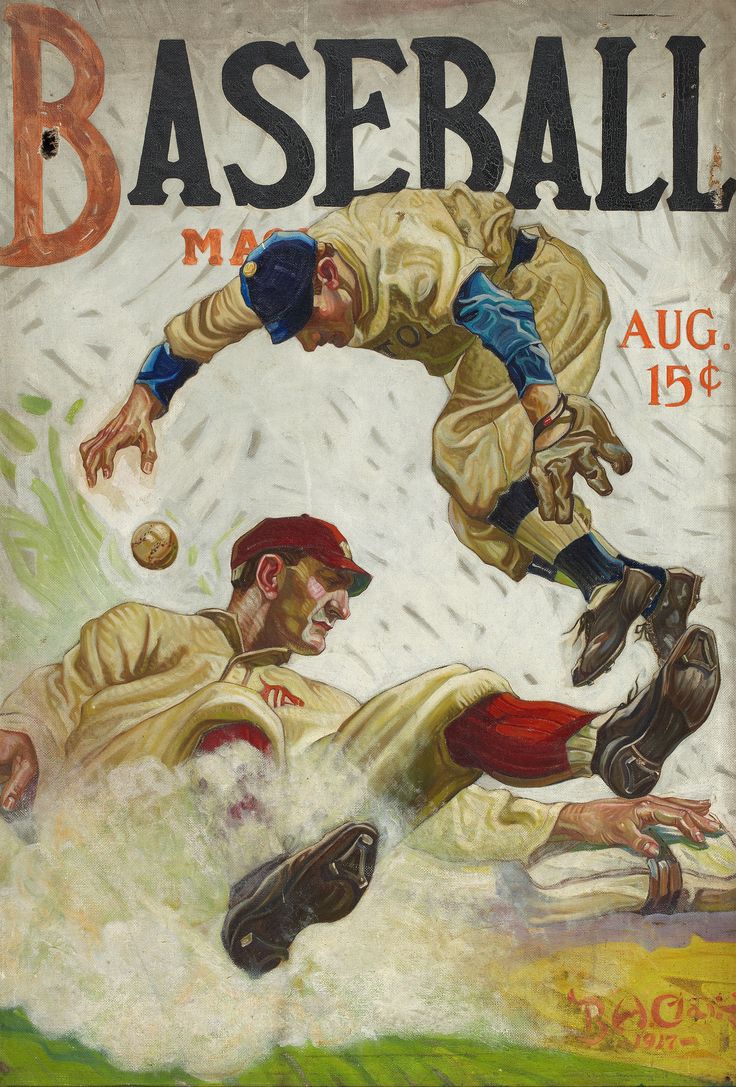
From the existing reference photos, the painting appears to from the first game of a Dodgers-Pirates doubleheader Rockwell attended on Tuesday, September 14; although it’s actually more likely a conflation of events from the games played on September 13 and 14. The scoreboard lists an upcoming Wednesday doubleheader against the Reds, to be played on September 15.
Close scrutiny reveals more details found in the painting:
- Beans Reardon is the home plate umpire, and the two base umpires are Larry Gertz and Lou Jorda.
- The players visible behind the umpires are Brooklyn coach Clyde Sukeforth holding his hat, and Pittsburgh manager, Billy Meyer.
- Three Pittsburgh fielders are visible in the distance: second baseman Danny Murtaugh, center fielder Johnny Hopp, and right fielder Dixie Walker. They can be identified from the reference photos used by Rockwell.
- On the scoreboard, part of the Brooklyn batting order is visible and the batter is number 20.
- The line score shows Pittsburgh with a single run, scored in the top of the second inning.
There’s confusion because not all details match the actual events of September 14: The Pirates didn’t have a 1-0 lead in either game of the doubleheader; Johnny Hopp played first base in both games, not centerfield; and no Brooklyn player wearing number 20 played that day.
Additional confusion results from the presence of Sukeforth in the painting. 1948 was the year Leo Durocher left the Dodgers for their cross-town rivals, the Giants. By September, Bert Shotton was the Dodger manager. Why wasn’t he in the painting instead of Sukeforth?
The Three Umpires also caused some controversy between Rockwell and the Post, due to the depictions of Sukeforth and Meyer and the score, which has Pittsburgh leading. If the game ends due to rain, Pittsburgh would win because they are ahead with five innings already in the books. If that’s so, why does Sukeforth—the Brooklyn coach—look happy, while Meyer—the Pittsburgh manager—appear unhappy?
Did Rockwell just take “poetic license” and chose to depict a fictional scene? Was he more interested in eliciting “baseball emotions” from his viewers rather than the accurate details of one particular game? Or perhaps he unfamiliar with the “fine points” of the rules governing rain shortened games and wasn’t completely aware of what he painted? We’ll probably never know for sure.
The Post provided this half-baked explanation for the confusing conversation at the plate:
“In the picture, Clyde Sukeforth, a Brooklyn coach, could well be saying, ‘You may be all wet, but it ain’t raining a drop!’ The huddled Pittsburgher—Bill Meyer, Pirate manager—is doubtless retorting, ‘For the love of Abner Doubleday, how can we play ball in this cloudburst?”
At the time of its appearance, The Three Umpires was well received by the public and became a popular Post cover. It’s been reproduced on many souvenir items and postage stamps. In 2008, the image was shown on the television series The Bronx Is Burning without permission which resulted in a lawsuit against ESPN. An early version of the painting was found in 2017 and sold for $1.68 million.
Shop MLB.com. The Official Online Shop of Major League Baseball.
Gary Livacari
Photo Credits: All from Google search
Information: Excerpts edited from Norman Rockwell Wikipedia page
Check out my latest books both now available on Amazon in e-book and paperback: Reflections On the 1919 Black Sox: Time to Take Another Look. All profits go to the Illinois Veterans Foundation
New Poll Question: How Do You Feel About the New 3-Batter minimum Rule for Relief Pitchers? Voice your opinion: https://wp.me/p7a04E-6UO
We are a participant in the Amazon Services LLC Associates Program, an affiliate advertising program designed to provide a means for us to earn fees by linking to Amazon.com and affiliated sites. Click here to view Amazon’s privacy policy
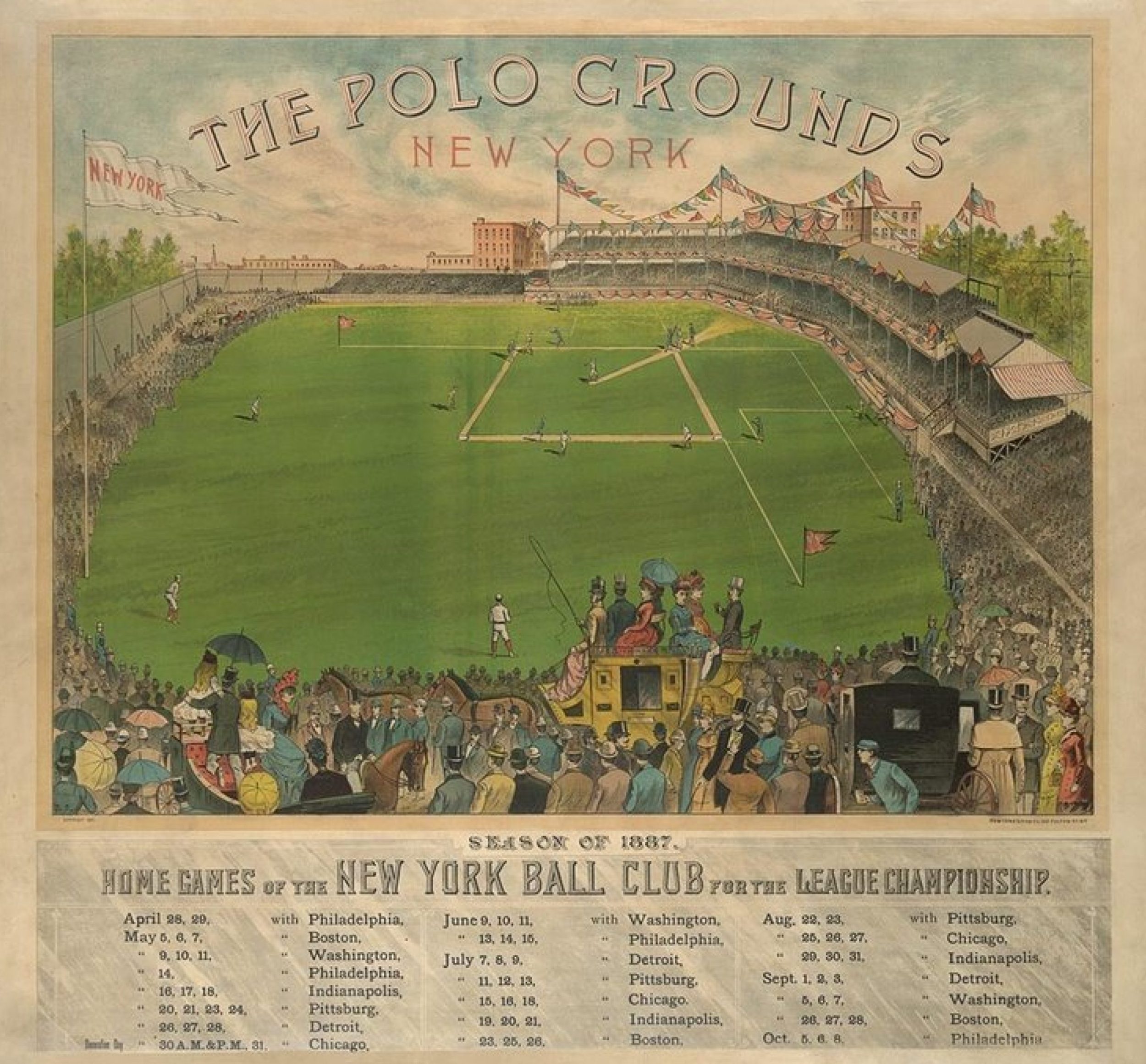
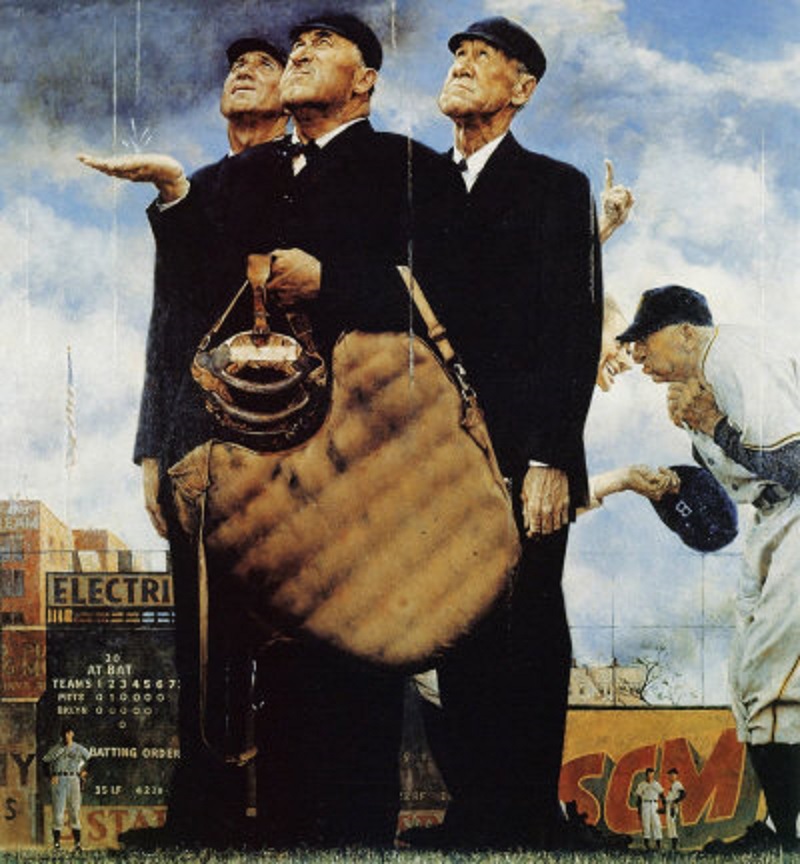
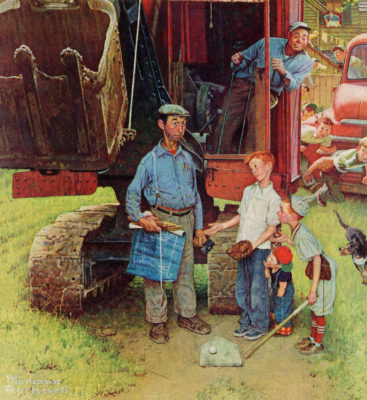
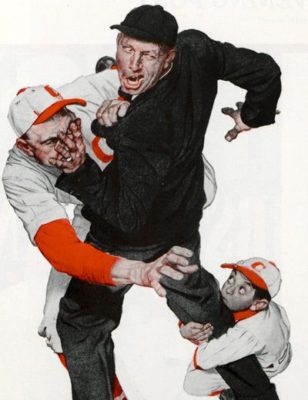
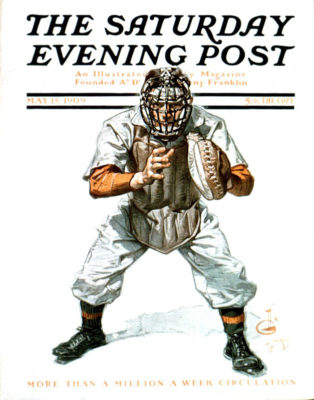
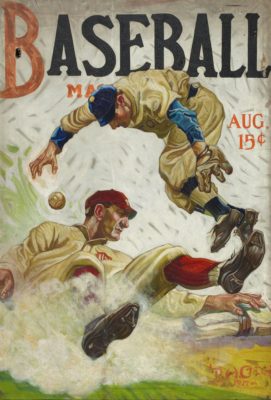
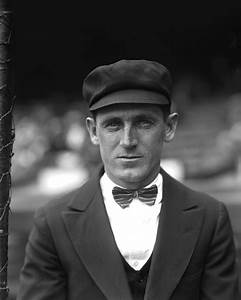
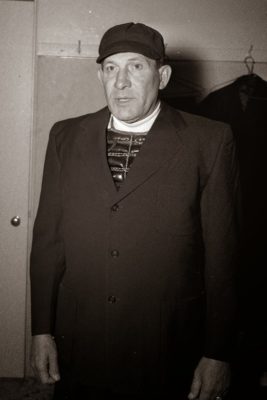
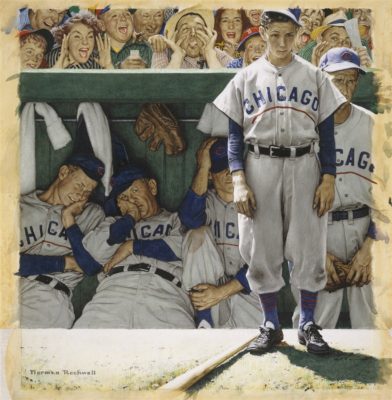
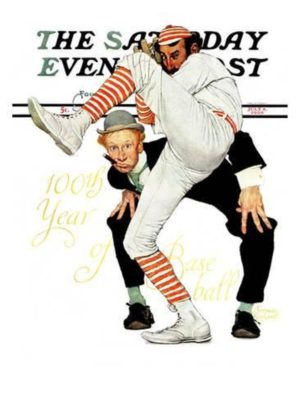
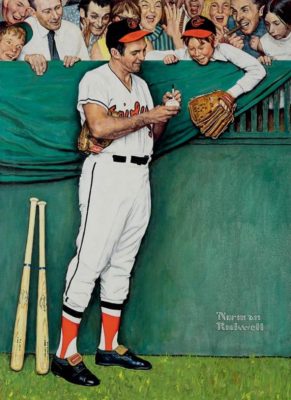
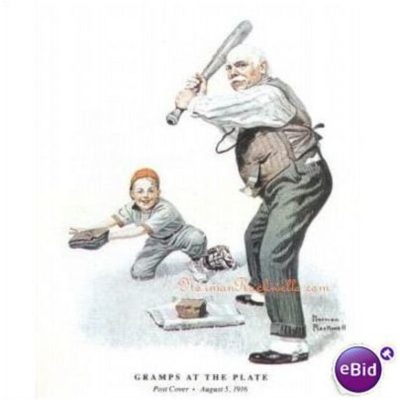
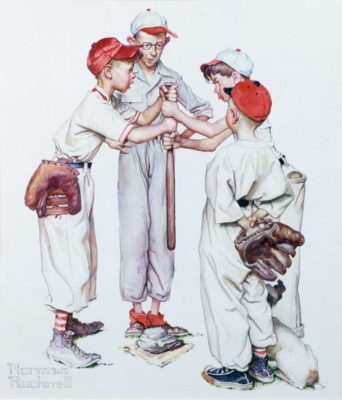
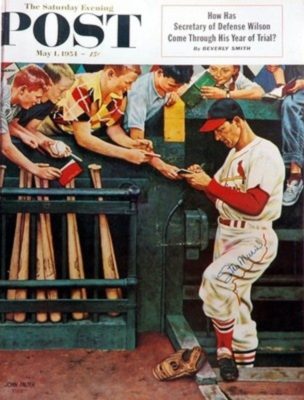
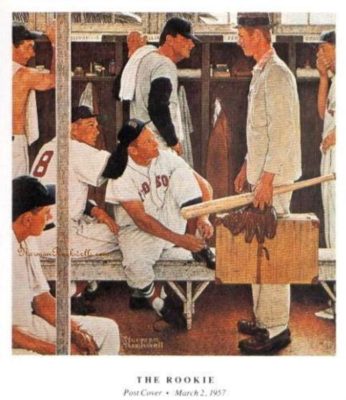
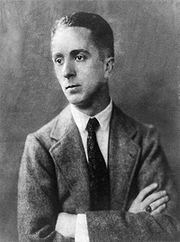
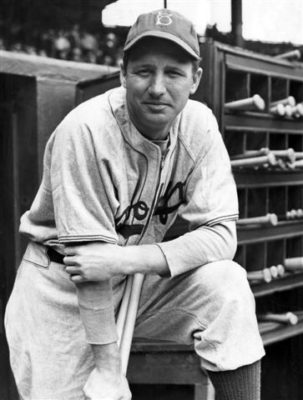
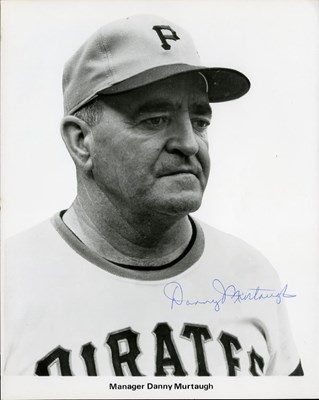
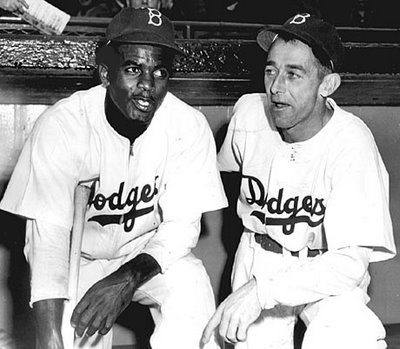
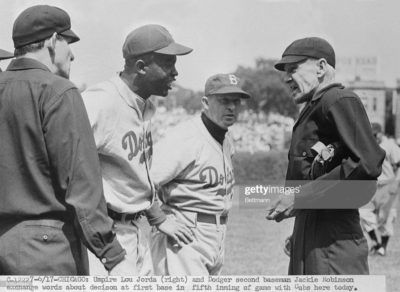
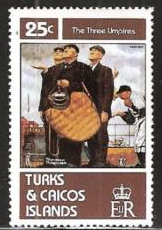

I see the original painting every October as I travel to Cooperstown during the World Series. First stop at the Hall of Fame is the gallery where this painting and his Stan Musial painting reside.
The gallery is on the first floor. Go past the admission desk, first right down the hall.
I believe that the scoreboard shows clearly that it is the Dodgers playing the Giants not the Pirates. It is pretty obvious that the last 2 letters visible of the visiting team are Gian – “ts” not “Pirat – “es”. Also the Giants colors were (and still are) orange and black wereas the Pirates are gold (yellow) and black. Rockwell may have attended the gane on April 23 between the Dodgers and Pirates but he painted one involving the quintessential Dodgers-Giants crosstown rivalry. The other manager then must be Mel Ott, but he does look more like the Pirates manager at that time Billy Meyer. Ott managed 75 games for the Giants that year before Durocher replaced him, so the game had to be early in the season. Durocher was fired by Brooklyn on July 11 that year. As the game Rockwell painted was on April 23 Ott was still the Giants manager and Durocher was still managing the Dodgers. The whole point of Durocher’s gesture to the heavens is that the rain is evidence of Divine intervention, because if the game is called due to rain before completing 6 innings it is not a complete game and must be played over from the 1st inning at a later date. This was definitely in Brooklyn’s favor at the moment. The painting then appears to be a composite with some artistic liberties taken. But it is still a classic.
Thanks Larry, interesting observations.
Growing up in Johnsonburg, PA where the Curtis Publishing Company, publisher of the Saturday Evening Post, owned the town’s paper mill, everyone in town received the Post and I grew up enjoying Mr. Rockwell’s magazine covers. But this cover always disappointed; it was not very accurate as most of his covers were. Besides the baseball rules controversy regarding rainouts the ABE STARK sign and GEM blades outfield signs are all wrong. From pictures I have seen Schaefers Beer ad was above the scoreboard, not ELECTRI. Not one of the great Rockwell’s best efforts